- Quick Read
- Deep Read ( 7 Min. )

Why is Christian Science in our name?
Our name is about honesty. The Monitor is owned by The Christian Science Church, and we’ve always been transparent about that.
The Church publishes the Monitor because it sees good journalism as vital to progress in the world. Since 1908, we’ve aimed “to injure no man, but to bless all mankind,” as our founder, Mary Baker Eddy, put it.
Here, you’ll find award-winning journalism not driven by commercial influences – a news organization that takes seriously its mission to uplift the world by seeking solutions and finding reasons for credible hope.
Explore values journalism About usIn Today’s Issue
- Georgia runoffs: Control of US Senate hinges on a shifting South
- ‘America is back.’ What that means to the world.
- Coronavirus spike: Why the US still isn't prepared
- In Nagorno-Karabakh ‘peace,’ a bitter conflict remains unresolved
- Why vision of Ethiopian unity is descending into warfare
- Goodness gracious: ‘Fireball’ captures how meteors shape our planet
Monitor Daily Podcast
- Follow us:
- Apple Podcasts
- Spotify
- RSS Feed
- Download
TODAY’S INTRO
Feeling frayed? Lessons from the first Thanksgiving.
 Husna Haq
Husna Haq
A year of pandemic and political fatigue has left many of us feeling frayed.
But reconnecting with the values that Americans commemorate around Thanksgiving and Veterans Day – gratitude and its offshoot, service – can open the door to new ways of thinking.
Consider the spirit that prompted Native Americans to help Pilgrims survive a tough New England winter by giving them food, a gesture that was celebrated in the 1621 Plymouth feast. That same spirit motivated 9-year-old Aggie Barrington, when she visited a Columbus, Ohio, homeless shelter and found people could no longer eat hot meals together, to make sack lunches with her brother, Patrick, and deliver them to the shelter. Since March, more than 2,000 kids have made more than 21,000 lunches for hungry neighbors under the nonprofit Seeds of Caring.
Volunteering offers a cornucopia of good according to research, including boosting empathy, inspiring a sense of purpose, curbing social isolation, even rekindling a feeling of shared national identity.
Perhaps the real gift, however, is the change in perspective gratitude and service offer. Especially valuable during these times is the reminder that gratitude is a state of mind – regardless of circumstance. As the 13th-century Persian poet and Sufi mystic Rumi was reported to have said, “Thanksgiving is sweeter than bounty itself.”
Share this article
Link copied.

Help fund Monitor journalism for $11/ month
Already a subscriber? Login

Monitor journalism changes lives because we open that too-small box that most people think they live in. We believe news can and should expand a sense of identity and possibility beyond narrow conventional expectations.
Our work isn't possible without your support.
Georgia runoffs: Control of US Senate hinges on a shifting South
In the heart of the South, Georgia has become a state of striking diversity. Now runoffs in the hands of its shifting electorate will determine control of the U.S. Senate.
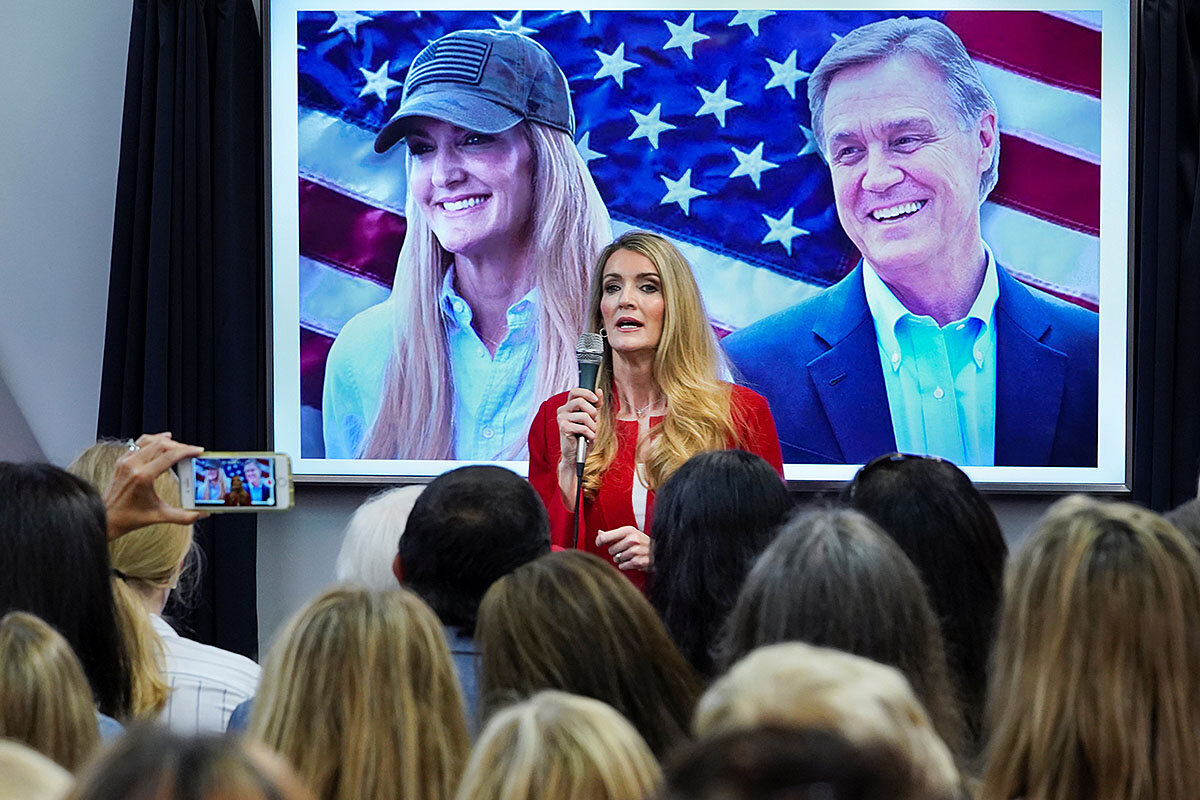
Georgia is now the stage for a throwdown fight for the control of the U.S. Senate, as the state prepares to hold two senatorial runoffs on Jan. 5.
“I did not dislike Donald Trump,” says independent voter Lawrence Leach, who appreciates what he calls the president’s muscular foreign policy. But amid a damaging pandemic, “finally I couldn’t take the disunity.”
He helped push Democrat Joe Biden to a narrow victory in the presidential race, which will undergo a recount. And Mr. Leach now relishes his state’s unexpected appearance at a historic crossroads of American politics.
Georgia’s winding journey to the main stage reflects the evolution of a center-right state under full Republican control to one with an increasingly diverse and energized electorate. It’s becoming an up-for-grabs crucible of a changing South.
Both of Georgia’s U.S. Senate races were toss-ups heading into the general election, according to J. Miles Coleman at Sabato’s Crystal Ball, at the University of Virginia.
Still, he says, “The attitude I’ve heard from a lot of Republicans in those north Atlanta suburbs is, ‘We don’t like Trump, but just give me some Republican to vote for.’ That’s a dynamic the Democrats are going to have to consider in the runoffs.”
Georgia runoffs: Control of US Senate hinges on a shifting South
From where he sits in front of his father’s Savannah Gardens home, independent voter Lawrence Leach can detail the economic devastation from the coronavirus crisis.
That house on the corner? That woman lost her job. Across the street? Her, too. And the next street over? At least two of his friends are out of work and struggling to pay the bills.
The pandemic and an economic downturn had an impact on his own bottom line, too, since people can no longer afford his modestly priced lawn-mowing services.
Looking in part for leadership to “squash the virus,” Mr. Leach, a computer technician by trade and landscaper by necessity, became one of thousands of Black voters in Atlanta and Savannah to swing the state to a Democrat – Joe Biden – for the first time in nearly 30 years. With President-elect Biden ahead by more than 14,000 votes in the state, Georgia’s secretary of State announced a hand recount of the presidential votes.
A long-term push by Democrats to turn Georgia blue now sets up a throwdown fight for the control of the U.S. Senate, as the state prepares to hold two senatorial runoffs on Jan. 5.
“I did not dislike Donald Trump,” says Mr. Leach, who appreciates what he calls the president’s muscular foreign policy. “But finally I couldn’t take the disunity.”
As Georgia is suddenly on everyone’s mind, he takes a second to bask in his home state’s largely unforeseen appearance at a historic crossroads of American politics.
“Makes me proud,” he says.
Georgia’s winding journey to the main stage reflects the evolution of a center-right state under full Republican control to one with an increasingly diverse and energized electorate. It’s becoming an up-for-grabs crucible of a changing South.
Republicans are seen by many as having an edge in the runoff campaign, since it won’t feature the Trump-Biden matchup that fueled turnout in the general election. But as the nation focuses its attention – and political dollars – on this state in coming weeks, Georgia offers a glimpse into how demography may be less destiny than opportunity, and how empowered electorates can turn single-party states into dynamos of democracy.
“I don’t like the term ‘change,’ because then you almost negate or belittle native Georgians, as if we need to change what Georgia is,” says Tammy Greer, a political scientist at Clark Atlanta University, who has studied Georgia’s political shift for the past 12 years. “I prefer to say ‘enhance’ what is already here in Georgia. When you do that, you bring more people into the fold instead of pushing them away. That’s when you see that people in urban areas really care about the people in the rural areas, because they literally have the same concerns – and are both sometimes neglected.”
The runoff races are occurring because Georgia is a rare state that requires at least 50% of votes to claim victory. Two Democrats – the Rev. Raphael Warnock and the documentarian Jon Ossoff – will on Jan. 5 face off against Republican incumbents, who are businesspeople: investment guru Kelly Loeffler and former Dollar General CEO David Perdue.
“All eyes are on Georgia,” says Emory University political scientist Andra Gillespie.
A Peach State evolution
With 10 million people and 16 electoral votes, the Peach State is a study in contrasts. It was once a pioneer in an industrializing New South. Today, it hints at a possible “Blue South.”
Singular among the Deep South states, the former 13th Colony was founded on debtors’ prison reform. But an early ban on slavery faded quickly, allowing the state to become defined by human bondage and its violent aftermath. Native son Martin Luther King Jr. provided a bookend with his epic battle for racial inclusion. (Mr. Warnock now heads King’s former church, Ebenezer Baptist Church, in Atlanta’s Old Fourth Ward.)
Georgia’s modern diversity is striking. Hip-hop artist Future hails from from Atlanta’s east side, and country artist Luke Bryan from rural Leesburg. Global refugees flock to Clarkston, Koreans and Vietnamese to Doraville, and Latinos to, well, just about everywhere. A triumvirate of historically black colleges anchor Atlanta, a global city led primarily by African Americans. Some call it “Wakanda” after the utopian city in the movie “Black Panther.”
White voters in Georgia have declined from nearly 8 in 10 in the Clinton years to 6 in 10 today. Losing margins for Democrats in statewide races went from 10 in 2012 to 5 in 2016 to 1.5 in 2018, a tide that finally crested this year for Mr. Biden, who is up by less than a percentage point heading into the recount.
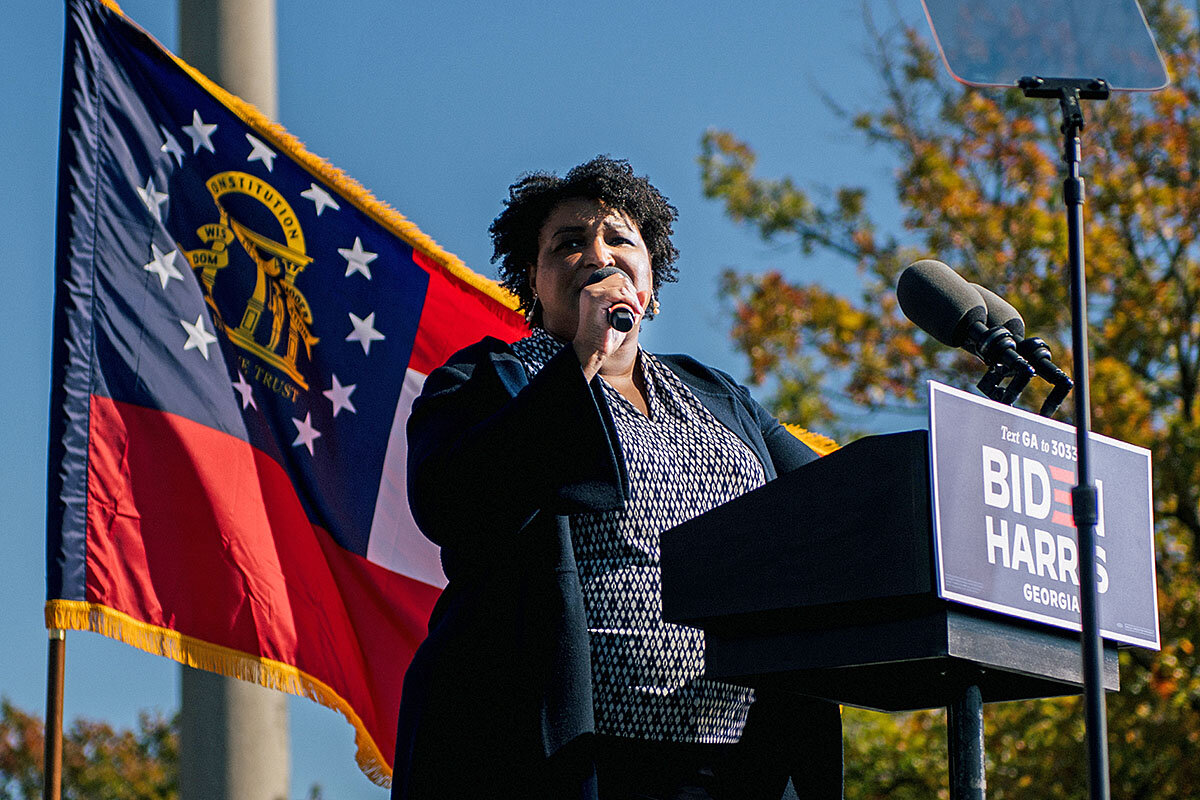
Still, state-level politics remain led by largely rural white politicians – Republicans who superseded the Southern Democrats who long held sway.
Republicans control the governorship and both legislative houses, a trifecta that Democrats mistakenly believed they might crack in 2020. That fact alone puts a damper on the hope of using Georgia to build a Democratic trifecta in Washington.
“While we lost the presidency ... Republican values and positions on policy were actually ratified by the voters,” says GOP operative Eric Tanenblatt. “And if anything I think that in Georgia we’re still a center-right state.” The Democrats in the race, he believes, “don’t match up or align with Georgia values.”
Amid the demographic changes, Mr. Tanenblatt says that in many ways the state lives up to its motto, “Wisdom, justice, moderation.”
“I disagree about Georgia being conservative, because there are many policies in Georgia that liberals agree with, yet the [policies] come from conservatives,” agrees Ms. Greer at Clark Atlanta. “If there were more political participation you would have ... a very centered Georgia when it comes both policies and politics – particularly political rhetoric.”
Stacey Abrams’ role
Ms. Gillespie at Emory says the Georgia results can’t be explained without a bold mention of Stacey Abrams and her 2018 gubernatorial candidacy.
After narrowly losing her 2018 race without conceding, Ms. Abrams, a Yale-educated lawyer, turned up the volume on her Fair Fight organization, activating about 100,000 new voters. Her efforts reverberated nationally. Democrats in the battleground state of Wisconsin, which Mr. Biden won decisively after Mr. Trump’s victory there in 2016, credited Ms. Abrams for her voter protection initiatives.
In remarks to the progressive group Frontline ahead of last week’s election, Ms. Abrams compared Democrats chasing Georgia to “Lucy and the football with Charlie Brown: Why bother because it’s never going to happen?”
The solution was to try harder, she told attendees: “We will dream bigger than they think our imaginations can contain.”
Defying rules of thumb here, Mr. Biden squeaked through with less than 30% of the white vote in Georgia. In counties like Clayton County, which put Mr. Biden over the top early Friday morning, the memory of the late civil rights leader John Lewis, who frequently feuded with President Trump, played a role for at least some voters.
Echoes of 1992
The last time Georgia stood at the center of U.S. politics was 1992. That year, too, a presidential race roiled the political stakes.
In the weeks after Bill Clinton clinched Georgia’s electoral votes, state Senate Minority Leader Paul Coverdell faced a U.S. Senate runoff. His eventual victory set the stage for subsequent GOP domination in statewide elections.
“In 1992, it’s just like what we’re experiencing now: You had an incumbent president that got defeated, and there were people very disappointed that we lost the White House,” says Mr. Tanenblatt, who ran Mr. Coverdell’s campaign. “But the one bright hope ... was Paul Coverdell.”
He recalls sending staffers to the post office with black plastic garbage bags to collect all the donation checks that poured into the race.
“[President-elect] Clinton came, saxophone in hand. We had Charlton Heston. All eyes were on Georgia. I would imagine the same is going to happen over the next 60 days here.”
This year, both of Georgia’s U.S. Senate races were toss-ups heading into the general election, according to J. Miles Coleman at Sabato’s Crystal Ball, at the University of Virginia.
Mr. Warnock and Mr. Ossoff have already campaigned together as a ticket.
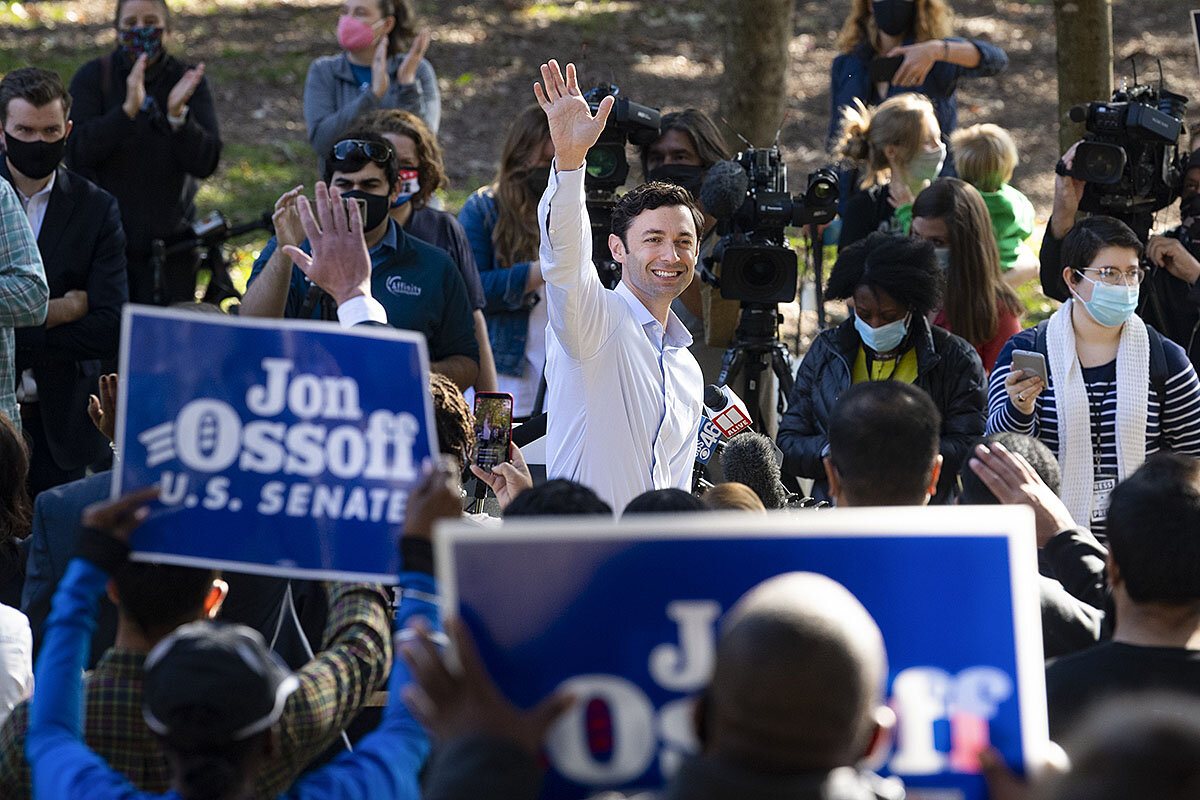
On the Republican side, Senators Loeffler and Perdue called for Secretary of State Brad Raffensperger to resign over unspecified problems with the election. Mr. Raffensperger, also a Republican, said “that isn’t going to happen,” suggesting the candidates focus on their own races.
Neighboring South Carolina may be a cautionary tale for Democrats. Despite hauling in a massive amount of money to run against Sen. Lindsey Graham, Democrat Jaime Harrison fell far short.
“One of the lessons this week was that a lot of those kind of wealthier white suburbanites who trended a bit more Democratic in the Trump era, they are not full Democratic voters yet,” says Mr. Coleman. “The attitude I’ve heard from a lot of Republicans in those north Atlanta suburbs is, ‘We don’t like Trump, but just give me some Republican to vote for.’ That’s a dynamic the Democrats are going to have to consider in the runoffs.”
Mr. Coleman adds: “What may help is that Ossoff is running with a Black candidate on his ticket. That’s something that Democrats, especially in the South, have to remember: The heart and soul of the Democratic Party is not white suburban liberals, it is Blacks. We also learned from the Jaime Harrison race ... that there are two things money can’t buy: love and Senate races.”
That leaves the governing direction of the country up to voters like Tony Brown, whiling away a few minutes on a bench in Savannah Gardens on Monday. Reveling his contribution to Mr. Biden’s victory, Mr. Brown says he looks forward to voting again on Jan. 5.
“The battle ain’t over,” he says.

Patterns
‘America is back.’ What that means to the world.
Had Donald Trump won the election, many world leaders were ready to turn their backs on Washington. Now, relieved, they hope Joe Biden will make America’s international presence felt.

- Quick Read
- Deep Read ( 4 Min. )
-
By Ned Temko Correspondent
“Welcome back America!” That’s how the mayor of Paris greeted Joe Biden’s election on Twitter, and her sentiment is widely shared around the world.
There is a strong sense that in these fractious times, the world needs America as a powerful voice of reason on the world stage and as democratic ballast steadying an uncertain planet.
Donald Trump’s unpredictable approach to international allies and his highly personalized “America First” policy have not gone down well abroad, and hopes are high that President-elect Biden will restore America to its traditional leadership role.
Allies are counting on Mr. Biden to bring Washington back into the Paris climate change agreement, for example, and to stay in the World Health Organization. They also expect him to repair frayed ties with the European Union and NATO.
But they wonder how far he will be able to erase the diplomatic impact of the past four years. So leaders like Emmanuel Macron of France and Angela Merkel of Germany are sticking to their plans to strengthen Europe’s own voice, and take its own responsibilities, independent of the continent’s transatlantic ties.
“We won’t pick up things where we left off in 2016, European Commission President Ursula von der Leyen said the other day. “The world has changed.”
‘America is back.’ What that means to the world.

“Welcome back America!”
The celebratory tweet from Paris Mayor Anne Hidalgo came just minutes after the U.S. television networks had called the presidential election in favor of Joe Biden last weekend, and her response has been echoed in the days since by many U.S. allies around the globe.
The underlying message: In an increasingly fractious world there is a strong desire to feel America’s presence. Especially in the face of borderless challenges like the COVID-19 pandemic and climate change, hopes are high that the most powerful democracy on earth will reengage internationally, move away from President Donald Trump’s highly personalized “America First” approach, and resume something more like its traditional leadership role on the world stage.
That view is particularly prevalent among America’s traditional European allies, who were deeply concerned by the prospect of an additional four years of Mr. Trump’s policies. They voiced alarm at Mr. Trump’s preemptive claim of victory as the polls closed, and this week, the leaders of France, Germany, and Britain shrugged off the president’s continuing refusal to accept the election result to engage personally with President-elect Biden.
They, along with America’s main partners in Asia, are not taking this path primarily because they expect any particular policy changes under a Biden administration.
Rather, they share a broader hope, less about American policy than American presence – both in multilateral institutions, and as a source of democratic ballast in an unsteady world. The absence of this kind of engagement, in their view, has emboldened autocratic regimes, hamstrung advocates of human rights, and left the field open for major powers like China and Russia to become more assertive.
Few expect as dramatic a change as was suggested by former Polish Prime Minister Donald Tusk just after Mr. Biden’s victory. “Thank you, Joe,” he tweeted, adding that “Trump’s defeat can be the beginning of the end of the triumph of far-right populism.” Still, many observers share the view that autocratic or authoritarian governments will feel more constrained, and such regimes, themselves, do appear to have sensed a change in the wind.
As is often the case in international affairs, it’s been important since the election to watch for the old Sherlock Holmes clue: the dog that doesn’t bark. While leaders of the world’s democracies were sending messages of congratulations to the president-elect, a number of other countries initially held back.
Among them were the self-proclaimed “illiberal democracies” of Hungary and Poland. Turkey and Saudi Arabia as well. And the few leaders delaying even further included China’s Xi Jinping, Russia’s Vladimir Putin, and Jair Bolsonaro, the far-right populist president of Brazil.
The full policy impact of a Biden administration will become clear only further down the road, and even those allies quickest to welcome the election result are assuming that the new president will focus first on domestic challenges: the headlong spread of COVID-19 and its hugely damaging economic effects, and healing a deeply divided America.
But they do view one global campaign commitment as enormously important: his pledge to reverse Mr. Trump’s withdrawal from the 2015 Paris Agreement on the day he takes office. That’s not just because of its symbolic significance, as a high-profile example of America’s reentry into multilateral diplomacy. It’s also a practical matter. It will not be possible to speed up international efforts to contain global warming unless the U.S. plays a leading role.
Among those who this week strongly welcomed that prospect, in fact, was the European leader personally closest to Mr. Trump, British Prime Minister Boris Johnson. He is due to host the follow-up conference to the Paris accord in Glasgow next year.
America’s partners are also anticipating U.S. efforts to repair two transatlantic relationships that have frayed badly during Mr. Trump’s presidency – ties with NATO and with the European Union.
They also expect Mr. Biden to reverse the Trump administration’s withdrawal from the World Health Organization, as well as to seek a shared approach with allies in response to Chinese leader Xi Jinping’s tightening political control at home and moves to extend China’s economic, political, and security influence abroad.
But even as U.S. allies nurture these hopes, one key question remains: How comprehensively would, or could, a Biden administration reverse the full diplomatic impact of the past four years? They are keenly aware that nearly half of Americans voted to reelect Mr. Trump. It remains to be seen whether the new president will command a majority in the Senate. And his own Democratic Party harbors opponents of free trade and overseas security commitments.
Beyond this, Mr. Trump’s public criticism of long-standing allies, his denigration of both NATO and the European Union, and his sheer unpredictability have seriously undermined transatlantic trust.
French President Emmanuel Macron, in particular, has been arguing that the EU needs to strengthen its own voice and influence independent of its alliance with Washington. German Chancellor Angela Merkel, long reluctant to embrace this kind of vision, has become more open in recent months to the need for closer economic, financial, and political cohesion inside the union.
In remarks this week making it clear she was looking forward to working with Mr. Biden, Ms. Merkel added a note of caution. “We Germans, and Europeans, understand that we must take on more responsibilities in this partnership in the 21st century. America remains our most important ally, but it rightfully expects more of us to guarantee our own security and defend our values around the world.”
And in the immediate aftermath of the U.S. election, European Commission President Ursula von der Leyen predicted that even under a Biden presidency, “we won’t pick up things where we left off in 2016. The world has changed.”

The Explainer
Coronavirus spike: Why the US still isn't prepared
A resurgence in coronavirus cases is a nationwide U.S. challenge, especially severe now in rural Plains states. From funding gaps to shortfalls in protective equipment and rural hospital beds, we look at the nation’s readiness.

- Quick Read
- Deep Read ( 3 Min. )
In early November the United States became the first nation to see more than 100,000 new COVID-19 cases reported in a single day. The spike has raised questions about America’s ability to combat it.
Despite a new U.S. peak in cases, fatalities remain well below their rate this past spring. Some reasons, researchers say, may include better treatments and precautionary moves by older people who are considered more vulnerable.
Yet big challenges remain. One is overcoming the class and race factors that have allowed poor people and people of color to bear the brunt of the pandemic – both as patients and as front-line workers.
The lack of personal protective equipment remains a chronic problem, especially in hot spots for the virus. Smaller hospitals haven’t been able to stock up on gloves and masks as larger hospitals have. And rural hospitals, which have only 1% of the nation’s intensive care beds, now face a surge in patients.
One long-term challenge is unrelated to the pandemic: continuing funding cuts to public health. Once a vaccine is developed and approved, states say $8 billion will be needed for distribution.
Coronavirus spike: Why the US still isn't prepared

The coronavirus has spread from both coasts to the nation’s midsection and in early November the United States became the first nation to see more than 100,000 new COVID-19 cases reported in a single day. The spike has raised questions about America’s ability to combat it.
Q: What have we learned since the spring?
Researchers and government officials have learned a lot about how to battle and control the pandemic since it hit U.S. shores. Social distancing and masking up have become front-line responses. One of the encouraging developments is that, despite a new U.S. peak in cases, new fatalities remain well below their rate this past spring. One reason for this decline is demographic, researchers surmise. The virus is spreading to younger populations, which are considered less vulnerable than older adults.
Other likely factors include precautionary moves by older Americans and better treatments. Even at its reduced rate, however, researchers say the pandemic is responsible for roughly 1,000 fatalities per day, six times the average daily toll from the worst influenza season in the past decade.
Q: What are the continuing obstacles?
One challenge is the nature of the virus itself. Estimates vary, but some 20% to 40% of those infected are thought to be asymptomatic – they never exhibit any symptoms. So doctors warn that people can spread it without knowing they have it, making it much harder to trace. Another challenge is public policy. With the number of cases surging to new records, many experts blame the White House for continuing to downplay the threat.
John Auerbach, who heads Trust for America’s Health, a nonpartisan public health policy, research, and advocacy organization, points to a longer-term challenge: continuing funding cuts to public health. For example, two federal initiatives passed after 9/11 to help states prepare for disasters – the Hospital Preparedness Program and the Public Health Emergency Preparedness program – have seen their budgets cut by half and by a quarter, respectively, since 2003, according to TFAH.
Since the Great Recession, cuts in federal, state, and local budgets have also shrunk local public health departments by the equivalent of 26,000 full-time jobs. Once a vaccine is developed and approved, state health departments say an estimated $8 billion will be needed for distribution.
Another challenge: Overcoming the class and racial barriers that have allowed poor people and people of color to bear the brunt of the pandemic – both as patients and as front-line workers, Mr. Auerbach says. “We’re seeing that very clearly in COVID, but this has really been a long-standing phenomenon in health.”
Q: How prepared is rural America?
When the coronavirus first hit, rural America saw little risk. But it has turned out the risks are significant. Hardest hit now is North Dakota, from urban Fargo even to rural Cavalier County on the Canadian border. Geography poses an obstacle, as rural Americans often have to travel quite far to get medical care. Demographics are another. America’s 60 million rural residents are older and are diagnosed with chronic health problems at higher rates than the national average, so they’re considered more at risk from the virus. One other big challenge: health infrastructure. Rural hospitals have only 1% of the nation’s intensive care beds.
And the shortfalls aren’t all in rural areas. The lack of personal protective equipment remains a chronic problem, especially in hot spots for the virus. A U.S. Public Interest Research Group report in late October detailed crucial shortages in nearly 3,000 nursing homes around the country. Smaller hospitals haven’t been able to stock up on gloves and masks as larger hospitals have. Still, compared with the acute shortages last spring, the overall picture appears less bleak. Masks that were next to impossible to find in the spring have become ubiquitous, thanks to entrepreneurs as well as medical-supply specialists.
Enterprising companies have moved into ventilator production, alleviating that crunch. And relief organizations have stepped in to try to get the protective equipment to those who need it most. Since the start of the pandemic, Direct Relief, a California-based aid organization, has shipped more than 43 million masks, 7 million gloves, and millions of other items to health facilities in the U.S. and the world.
Editor’s note: As a public service, we have removed our paywall for all pandemic-related stories.

In Nagorno-Karabakh ‘peace,’ a bitter conflict remains unresolved
This week’s cease-fire gives Azerbaijan much of the land it lost to Armenia in an earlier war, and ends six weeks of fighting. But does it move the two countries any closer to real peace?
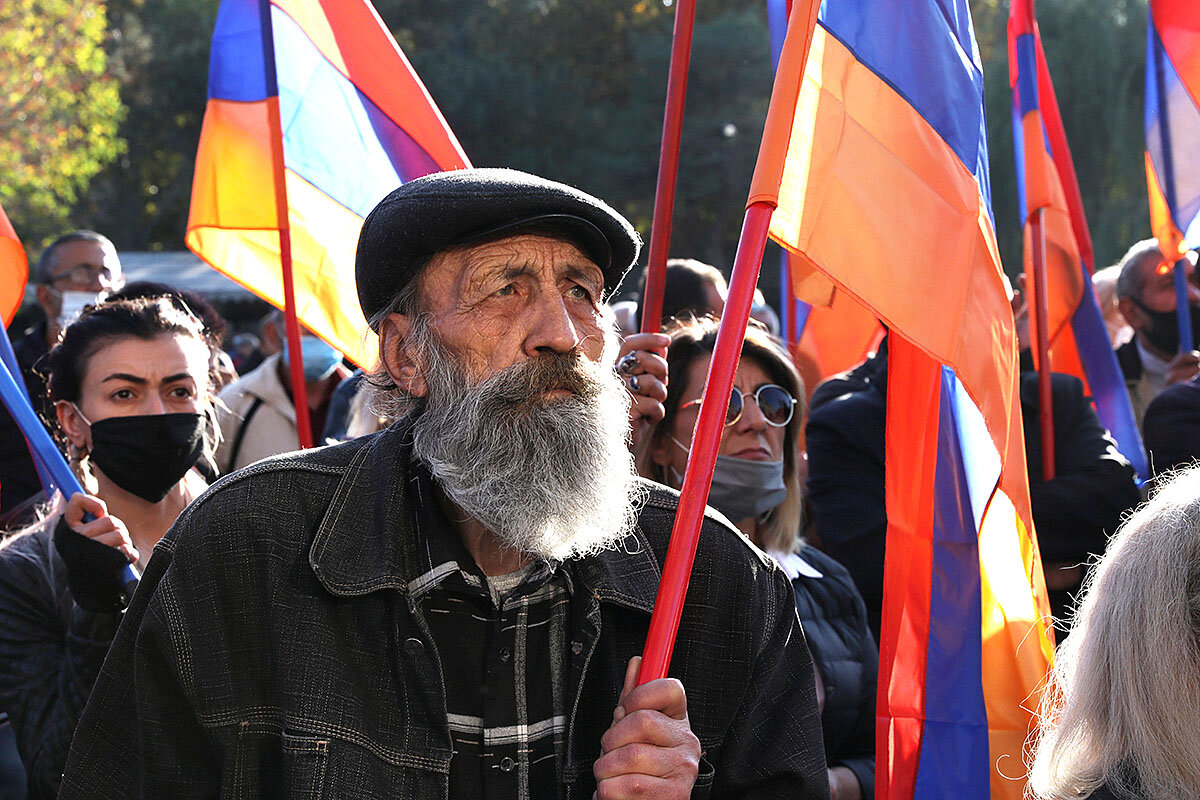
- Quick Read
- Deep Read ( 4 Min. )
-
By Neil Hauer Correspondent
When Armenian Prime Minister Nikol Pashinyan announced early on Tuesday morning that he had signed a peace deal with Azerbaijan to end their two countries’ six-week war, he acknowledged that “this is not a victory.”
Most people in Armenia are calling it a surrender, and there is no doubt that Azerbaijan has taken an important step toward recovering the ethnically Armenian region of Nagorno-Karabakh that it lost more than 25 years ago in an earlier war.
For the time being, though, the Russia-mediated deal just freezes the front lines – Azerbaijan had regained considerable amounts of territory, including Nagorno-Karabakh’s traditional capital, Shusha. It does nothing to resolve the bitter conflict over who has the legal and moral right to the territory.
Azerbaijan’s military success, aided by Turkey, suggests that the question of legal and moral rights in Nagorno-Karabakh will be overridden by the exercise of force. A quarter century ago, Armenia had the upper hand in that domain. Now the tables have turned, and maps of the northern Caucasus will have to be redrawn.
In Nagorno-Karabakh ‘peace,’ a bitter conflict remains unresolved
Just before 2 o’clock in the morning on Tuesday, Armenian Prime Minister Nikol Pashinyan took to his medium of choice, Facebook, to make the most difficult announcement of his career.
He had signed an agreement to end the six-week war with Azerbaijan over the disputed region of Nagorno-Karabakh, he explained, and the terms had been “extremely painful.” Under the Russia-brokered deal, Armenia has ceded all the territory Azeri troops had captured during the fighting, and more.
The agreement, however, is a stopgap, not a settlement, freezing the front lines rather than resolving differences. Armenia and Azerbaijan are now perhaps as far away from peace as they have ever been.
“I’m as worried as much by what is not explained [in the cease-fire accord] as by what is,” says Richard Giragosian, director of the Yerevan-based Regional Studies Center. “With no progress on the status of Karabakh, we are in a sense still stuck at square one.”
Mr. Pashinyan said he had made his decision after “an in-depth analysis of the military situation.” Azeri troops had made significant territorial gains last week.
The deal, widely viewed as a surrender, was greeted with angry disappointment in Yerevan, where official reports from the front had disguised the gravity of the situation. Soon after Mr. Pashinyan’s announcement, livid crowds of protesters descended on the capital’s Republic Square and broke into the prime minister’s official residence. Half a dozen men emerged on the second-floor balcony and led the crowd in chants of “Nikol betrayed us.”
Demonstrators quickly moved on to Armenia’s parliament and ransacked it as police stood by. “We are going to find that coward and drag him before us,” one protester said. “He sold out the homeland.”
The war broke out in September when Azerbaijan, backed by Turkey, launched an offensive to recapture territory it had lost to its neighbor in the early 1990s, when Armenia seized the ethnically Armenian region of Nagorno-Karabakh. In 1994, when the dust settled, ethnic Armenians controlled not only Nagorno-Karabakh itself, but also seven surrounding regions of Azerbaijan proper.
The nine-point agreement signed this week by Mr. Pashinyan, Azerbaijani President Ilham Aliyev, and mediator and Russian President Vladimir Putin allows Azerbaijani forces to hold on to the territorial gains they have made since fighting began six weeks ago, and extend them.
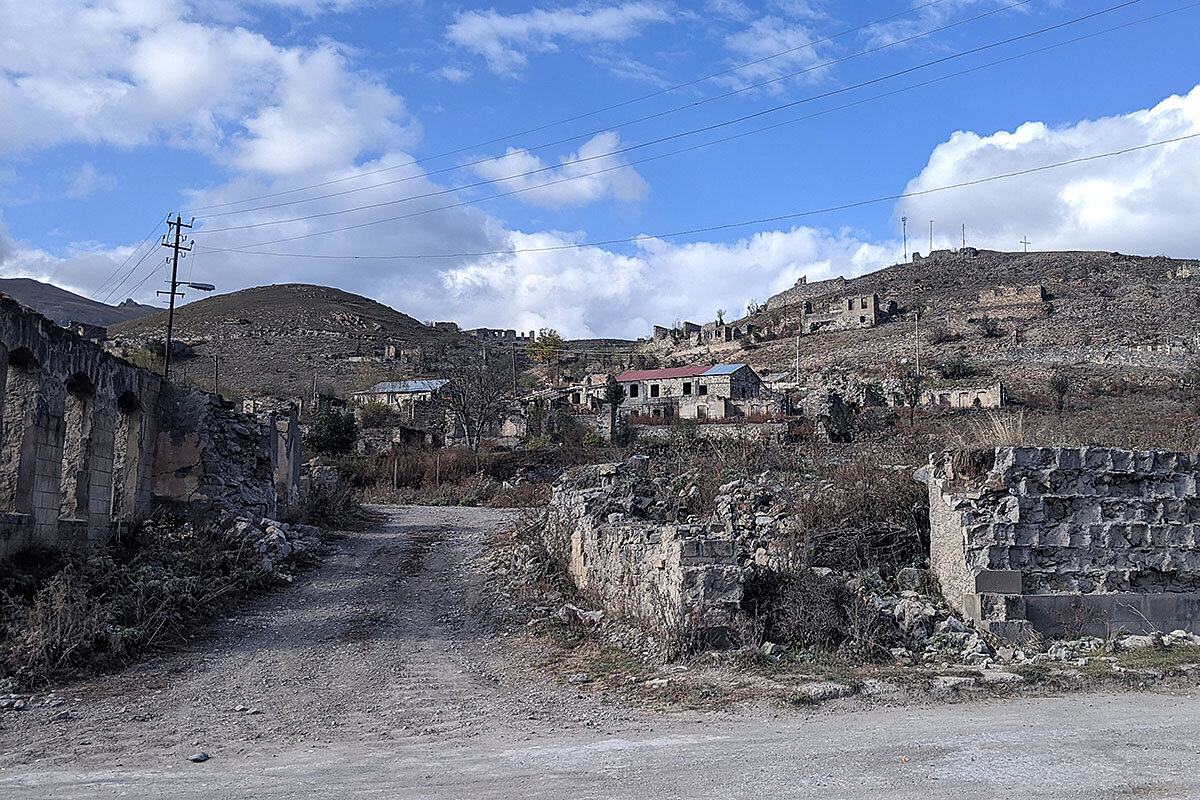
Most notably, these include the town of Shusha, known by Armenians as Shushi, the historical capital of Nagorno-Karabakh located squarely in the region’s center. Armenian forces must vacate other occupied Azerbaijani territories within weeks, while a 2,000-strong Russian peacekeeping force will guard a rump of Armenia-held territory within Azerbaijan whose final status remains undetermined.
Before the ink was dry on the tripartite agreement, Russian peacekeepers sped toward the region. They had been preparing for their new role before the deal was announced: A Russian Mi-24 helicopter mistakenly shot down by Azeri gunners on Monday night had been escorting a Russian military convoy toward Nagorno-Karabakh.
Many questions remain unanswered. The matter of Nagorno-Karabakh’s final status, for example, is not addressed in the agreement.
Some Armenians take a dark view, concurring with Russian political scientist Gleb Kuznetsov, who is considered close to the Kremlin. He wrote that the next five years will essentially serve as a period for local Armenians to “vacate” on their own, before Azerbaijan takes over Nagorno-Karabakh.
“Azerbaijan is going to be tempted to encourage such an exodus,” says Mr. Giragosian. But Russia’s potentially open-ended peacekeeping role could offer the region some protection, he says.
“Russian peacekeepers usually don’t go home once they deploy,” he says, pointing to Georgia, Moldova, and elsewhere. Their presence around the edge of Nagorno-Karabakh could be “potentially positive” for the territory’s unclear status, he suggests, forcing Azerbaijan to reach a political settlement instead of launching a renewed offensive.
But the failure of the current deal to address the deeper roots of the conflict compromises the Russian mission’s chances of achieving anything beyond a refreezing of the dispute. It addresses the symptoms, but not the cause, says Laurence Broers, Caucasus program director at Conciliation Resources, an international conflict resolution NGO.
“What worries me about this agreement is that there is a great silence on anything other than peacekeeping and transit corridors,” he says. “The threat of renewed war will continue to hang over any efforts at reconstruction, development, and peace building over the next five years.”
The territorial losses will surely prove very difficult for Armenians to stomach, convinced as many were of eventual victory even as the military situation worsened. Though most people knew that there were problems at the front, they drew strength from the memory of how dire the situation had been before Armenian troops turned the tables in 1994 to win a famous victory.
That made the gut punch of surrender this week all the more devastating.
In this sense, the dynamics of the conflict have not radically changed – they have simply flipped. Whereas previously Armenia was the dominant victor and Azerbaijan the aggrieved, resentful defeated side, this reality has now reversed – with the same ominous possibility for future violence.
Azerbaijan has thus far shown little of the magnanimity in victory that might help break this cycle.
In his first address following the deal, President Aliyev mocked the Armenian prime minister, laughing as he asked, “What happened, Pashinyan?” In the same breath, he rejected the idea that Azerbaijan would grant any autonomy to a potential Baku-ruled Nagorno-Karabakh in the future.
Meanwhile, many younger Armenians who were not born when their fathers fought the last war against Azerbaijan, and who might have developed more amicable views of their longtime foe, have died in this war.
Azerbaijan “has killed those who might have engaged with them,” says Mr. Giragosian, explaining that the new generation now harbors as much anger as its elders ever did. “They have poisoned the atmosphere for a generation.”

Why vision of Ethiopian unity is descending into warfare
As slogans, national unity and ethnic autonomy both sound compelling. Even uplifting. But in Ethiopia, a young yet ancient nation of many peoples, the evolution of a new identity is bringing them into conflict.
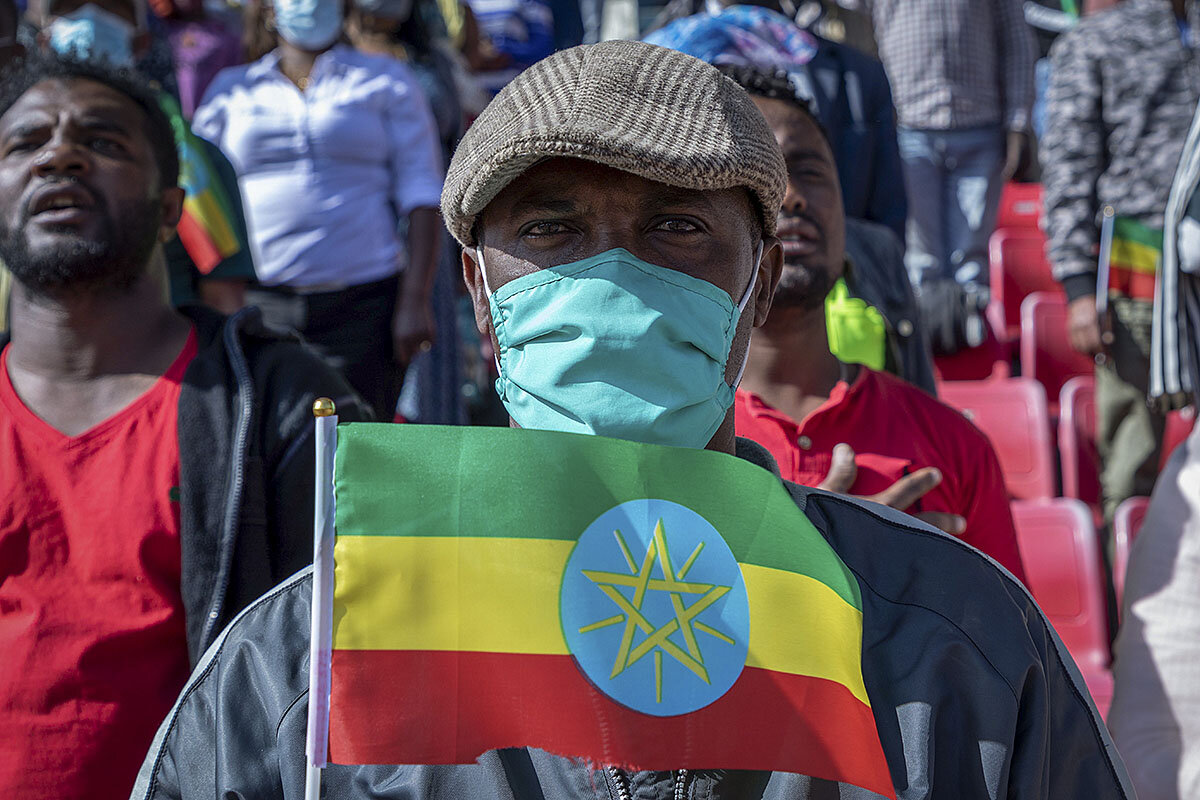
- Quick Read
- Deep Read ( 6 Min. )
In Addis Ababa, a museum in Unity Park stands as a symbol of Prime Minister Abiy Ahmed’s narrative of a modern, united Ethiopia. It includes displays showcasing Indigenous rituals and the three Abrahamic religions’ long history in the country. Others detail the legend of the Queen of Sheba and the shaping of modern Ethiopia by the kings, juntas, and technocrats that ruled in the 20th and 21st centuries.
It is all written in plain language, as if introducing members of Ethiopia’s many ethnic groups to one another. Yet this celebration of Ethiopia’s multicultural heritage is woven into Mr. Abiy’s narrative of one nation-state.
Now, what began as an ambitious campaign to unite and transform the country has escalated into a virtual civil war in the northern Tigray region.
Observers say Mr. Abiy and his allies see the federal system as weakening a nation-state they believe is on its way back to its rightful place as a major player in Africa and the world.
“To do away with ethnic identity is a magic potion for them,” says one Ethiopian observer, requesting anonymity. “If they redo the constitution and outlaw the expression of ethnicity in political form, Ethiopia will return as an empire.”
Why vision of Ethiopian unity is descending into warfare
In mere days, reformist Ethiopian Prime Minister Abiy Ahmed has gone from an internationally acclaimed Nobel Prize-winning peacemaker to a war-leader.
What began as an ambitious campaign to unite and transform the country into a leading African power – by upending a federal system based on regional ethnic autonomy – has escalated from a struggle over national identity to what is bordering on a civil war in Ethiopia’s northern Tigray region.
With reported casualties mounting, the United Nations has warned that the fighting could displace millions.
On one side of the conflict is the federal government led by reformist Mr. Abiy, who came to power with promises of a bold modernization program and was lauded by the international community for finalizing a peace deal with Eritrea.
On the other is the Tigray People’s Liberation Front (TPLF), a former leading political player that crafted Ethiopia’s federal constitution and the multi-cultural ethnic governing coalition that Mr. Abiy is replacing in his push for centralization.
Mr. Abiy announced airstrikes and a ground offensive on the Tigray region this week. But he insists that he is not at war, describing the military offensive as a “law enforcement operation” to bring to justice a “belligerent clique” within Tigrayan leadership.
Unity Park
A symbol of Mr. Abiy’s national narrative stands in Addis Ababa: Unity Park.
At his behest, the government converted former palace grounds of Emperor Menelik II, who forged modern Ethiopia through military conquest, into a public park and museum highlighting Ethiopia’s recent history and its different ethnic, religious, and linguistic groups.
Outside the museum stand cultural displays representing the different ethno-national groups and regions such as the Sidama, the Oromo (Ethiopia’s largest group), the Amhara, the Omo, Somalis, and the Tigrayans, a mostly Christian Orthodox group who make up about 6% of the population but have played an outsized role in politics and the military.
The museum includes displays written in Amharic and English showcasing Indigenous rituals and the three Abrahamic religions’ long history in the country. Others detail the legend of the Queen of Sheba and the shaping of modern Ethiopia by the various kings, emperors, juntas, and technocrats that ruled the country in the 20th and 21st centuries.
It is all written in plain language, as if introducing Ethiopians to one another.
Yet this celebration of Ethiopia’s multicultural heritage is woven into Mr. Abiy’s narrative of one nation-state and one people whose sum is greater than the individual parts, an inevitable shared destiny as a great empire.
Tigray conflict
Triggering the conflict in the Tigray region was the TPLF’s insistence on proceeding with scheduled regional elections in September despite the federal government’s constitutionally controversial decision to suspend national and local elections until 2021. The showdown escalated into clashes between the TPLF and federal forces stationed in the region this week.
The TPLF and other ethnic groups had hoped the elections would serve as a rebuke to Mr. Abiy’s centralized vision for Ethiopia, the second-most populous nation in Africa.
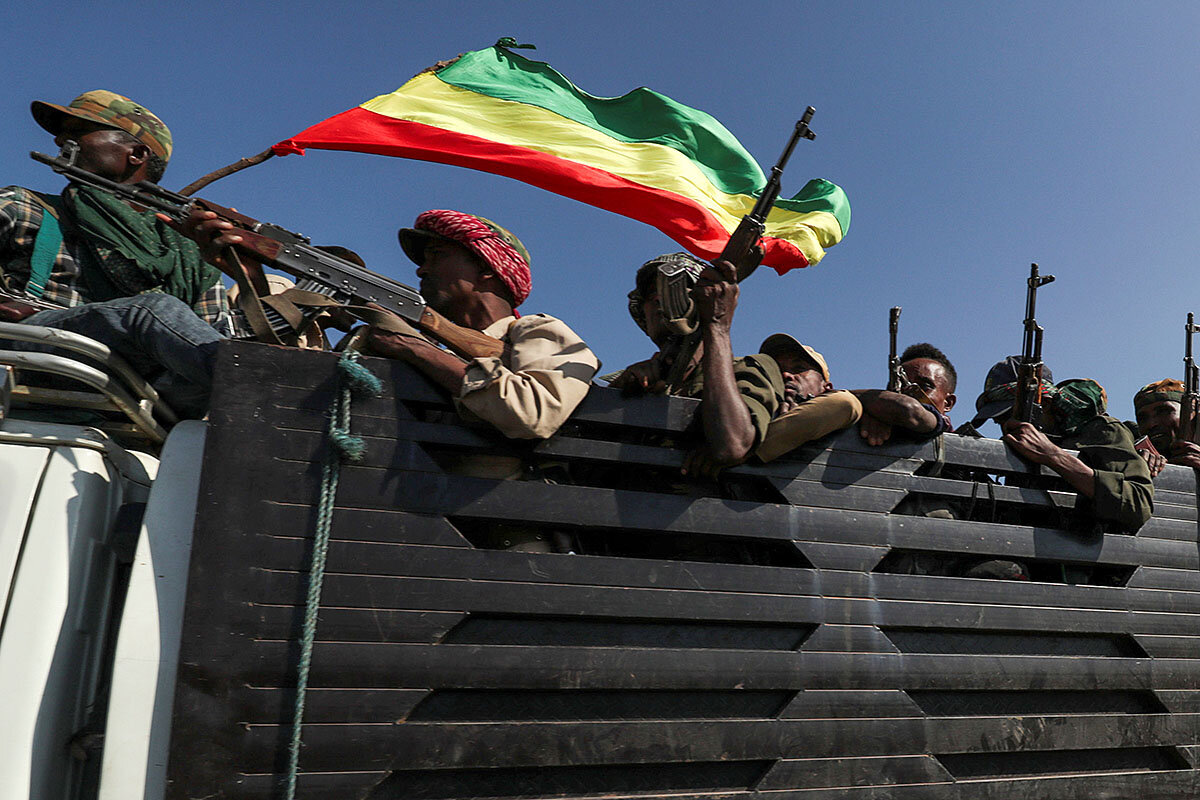
They fear the young prime minister, now without an elected mandate and having suppressed or coopted other regional political movements, will push through constitutional amendments that tilt the country toward a presidential system and reduce local groups’ rights and autonomy.
“If the election had taken place it would have been a referendum on the soul of Ethiopia. Is it one nation-state as one side believes, or is it a multicultural society within a federal arrangement?” says one Ethiopian observer who preferred to remain unnamed due to a wartime crackdown on media.
“I think what is ultimately playing out in this war is the result of two conflicting and contrasting views of the Ethiopian state,” says Awol Allo, a senior lecturer in law at Britain’s Keele University.
“On the one hand you have Abiy’s more unitary, centralized view of the future, where the center becomes the source of authority. On the other you have sub-national governments that demand greater autonomy as secured by the constitution.”
In 1991 Tigrayan leadership overthrew Ethiopia’s Marxist military junta and formed a multicultural governing coalition and the federal constitution, granting autonomy and the right to determination to nine ethno-geographic regions.
They object to the dissolution of the multi-ethnic coalition by Mr. Abiy, a member of the Oromo group who became prime minister in April 2018.
In the months leading up to the conflict, Mr. Abiy increasingly accused the TPLF, the “old guard,” of frustrating his reforms, harboring fugitives, and even inciting inter-ethnic strife across in Ethiopia to undermine his rule.
“Their objective was clear – to make the country ungovernable by instigating clashes along ethnic and religious lines to sow division and discord so that the democratic transition will lose its momentum,” Mr. Abiy said this week.
Observers believe Mr. Abiy sees the conflict as a chance to settle once and for all the struggle between an ethnic federation and a strong central government.
“The TPLF are presented by Abiy’s supporters as anti-reform, as are other ethno-nationalist movements that are at odds with the federal government,” says William Davison, senior Ethiopia analyst for International Crisis Group.
“It is evident that some of those who support the intervention against the TPLF see it as a chance to remove the prime architect of the ethno-nationalist constitutional order and then radically remake it.”
“If Abiy wins, the implication is clear,” says Keele University’s Mr. Allo. “It will be the end of the vision for a decentralized federal Ethiopia.”
National unity
In his two short years in power, Mr. Abiy has met reform benchmarks such as the release of political prisoners, boosting women’s representation in government, and liberalizing the economy.
Yet in each of his initiatives, he has also worked to present a united Ethiopia, one in which every ethno-linguistic group is represented and included, each a component of a greater whole, whose interests are subservient to that of the nation.
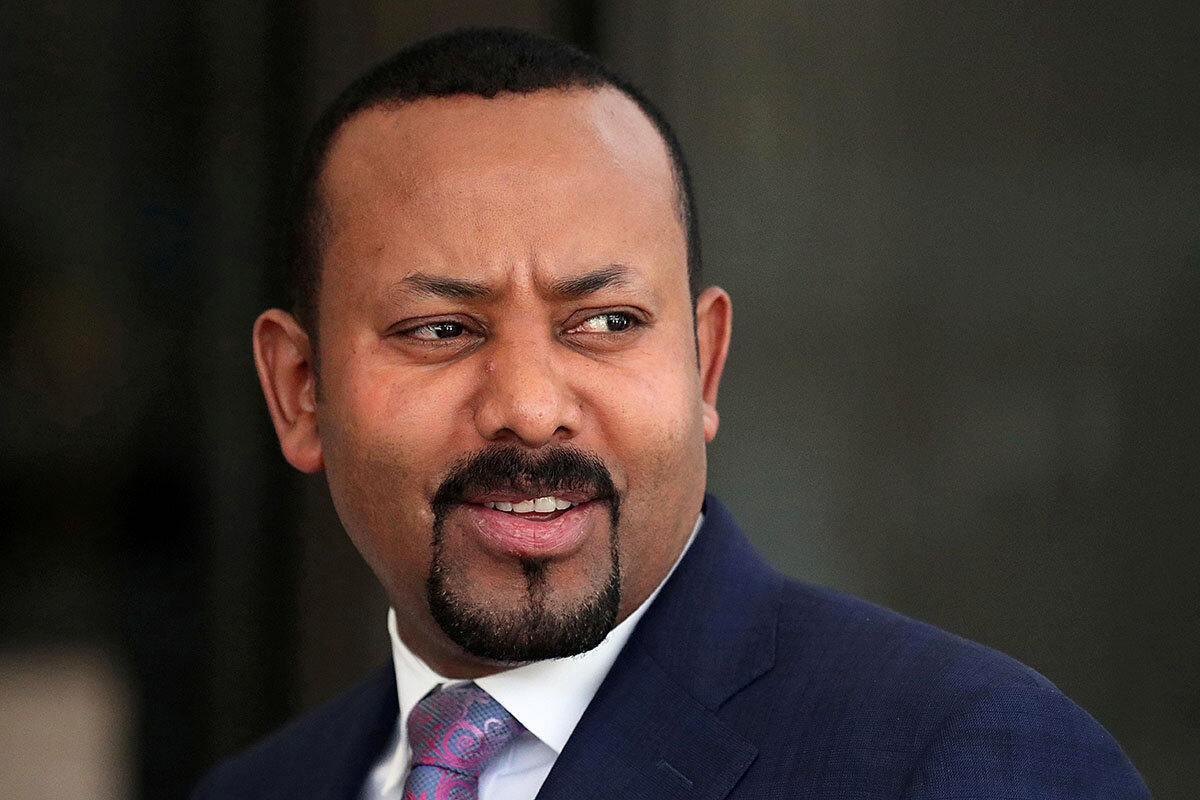
It is a tall task for a nation that was formed by the conquering and merging of kingdoms and nation-states in the late 19th and early 20th centuries.
Mr. Abiy’s national narrative is at odds with the various ethno-national groups demanding greater autonomy and rights across the country, and the multicultural federalist constitution in place that grants these groups autonomy and even the right to secede.
“We do not have a shared history or a common past – we all have competing narratives,” Mr. Allo says. “Federalist forces argue that instead of simply forging ahead like the government wishes, let’s construct a new narrative and shared memory for the future.”
According to observers, Mr. Abiy and his allies see the federalist system as weakening a nation-state they believe is on its way back to its rightful place a major player in Africa and the world.
“They think the expression of ethnicity is the source of all evil in Ethiopia,” said one Ethiopian observer, requesting anonymity.
“To do away with ethnic identity is a magic potion for them. If they redo the constitution and outlaw the expression of ethnicity in political form, Ethiopia will return as an empire.”
The TPLF, removed from federal government and confined to the Tigray region, have since emerged as the staunchest defender of regional rights and the status quo.
Fallout
The military confrontation’s fallout could be vast. The TPLF have an estimated 200,000 fighters, and their territory is home to the largest stockpile of Ethiopia’s military equipment and weapons, the third-largest arsenal in all of Africa.
Mr. Abiy has rejected mediation attempts by the U.N., Kenya, and others.
Hundreds of casualties have been reported despite a media and telecommunications blackout in Tigray. Already, several thousand refugees have been driven into Sudan; the U.N. warns 9 million could be displaced.
Others fear the greatest casualty will be the patchwork social fabric Mr. Abiy has gone at great lengths to present as united.
Tensions have flared between Tigrayans and the Amhara people, who hold territorial grievances, with Amhara militias reportedly mobilizing on their regional border with Tigray.
Other ethnic groups may seize the crisis as an opportunity to rise up, including the Oromo, who have grown increasingly disillusioned with Mr. Abiy. Dozens of Ethiopians were killed this July in protests and clashes over the assassination of an Oromo protest musician.
Mr. Abiy continues to push his message of unity and reconciliation – even as his war jeopardizes it.
“I would like to reiterate that no Tigrayan brother or sister should be a victim of identity-based illegal acts,” Mr. Abiy said in a Twitter post Sunday. “And this responsibility lies on all Ethiopians.”

On Film
Goodness gracious: ‘Fireball’ captures how meteors shape our planet
What is it about meteors? A documentarian and a scientist travel the globe encountering a range of people whose passion for what has dropped from the sky is, according to film critic Peter Rainer, “positively exhilarating.”
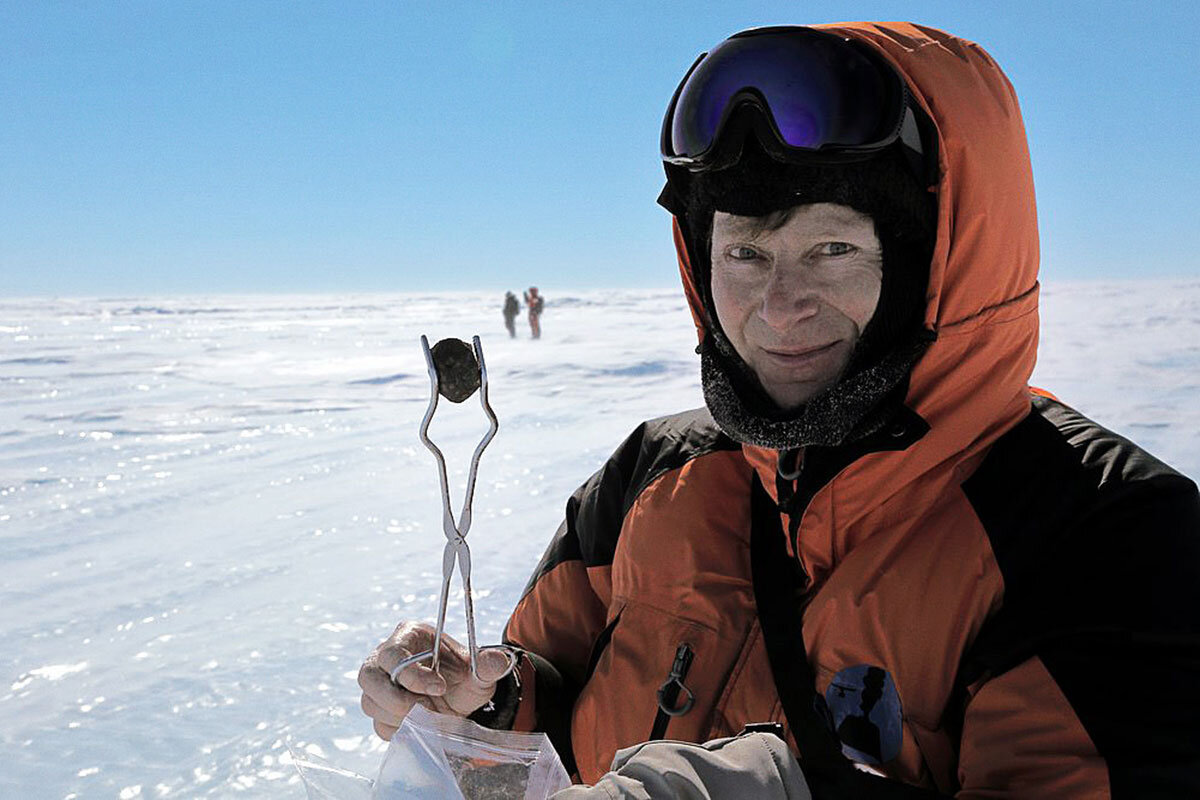
-
By Peter Rainer Special correspondent
Goodness gracious: ‘Fireball’ captures how meteors shape our planet
“Fireball: Visitors From Darker Worlds” is an awestruck movie about awe. A globe-spanning documentary co-directed by Werner Herzog and University of Cambridge scientist Clive Oppenheimer, it’s about how extraterrestrial rocks have literally shaped not only the Earth but the culture and dreams of its inhabitants.
Herzog is one of the greatest living filmmakers, both for his dramas and documentaries. “Fireball” is his second collaboration with Oppenheimer – the first was 2016’s “Into the Inferno,” about volcanoes. The two men complement each other perfectly: Herzog, who provides the film’s sinuously somnolent voice-over narration in his best Bavarian tones, has a mystic-rhapsodic temperament, while Oppenheimer, who, unlike Herzog, is often seen on camera, is more like a hard science David Attenborough type. For a film about “visitors from darker worlds,” both bents are necessary.
The documentary, debuting on AppleTV+ on Nov. 13, covers so many geographic locations – from the Yucatán Peninsula to Antarctica – that it also inadvertently functions as a kind of travel guide to the planet’s diversity. The filmmakers explore places where meteorites have impacted the Earth. They seek out where the fragments have been preserved and studied, monitored, and venerated. In the course of their journeys, they inevitably encounter a range of peoples whose passion for what has dropped from the sky is positively exhilarating.
We are taken to the Chicxulub Puerto village in Mexico, where some 66 million years ago the impact from an asteroid equivalent to thousands of millions of Hiroshima bombs is thought to have wiped out the planet’s dinosaurs. In Western Australia, the Wolfe Creek Crater, the site of another ancient strike, is holy ground for Indigenous peoples. The artist, Kate Darkie, who paints bright mythological panoramas, talks about how families visit the crater to feel close to their ancestors.
In Mecca, Saudi Arabia, Herzog was able to procure amateur footage of Islamic worshippers crowding inside the Grand Mosque to touch the sacred black stone that many assume is a chunk of meteorite and which the faithful believe was brought from heaven by the archangel Gabriel.
Alsace, in France, is where a gigantic meteorite hit in 1492, a scant seven days after Columbus arrived in the Caribbean. It solidified the realm of Maximilian I because it was taken as a sign that God approved of his rule.
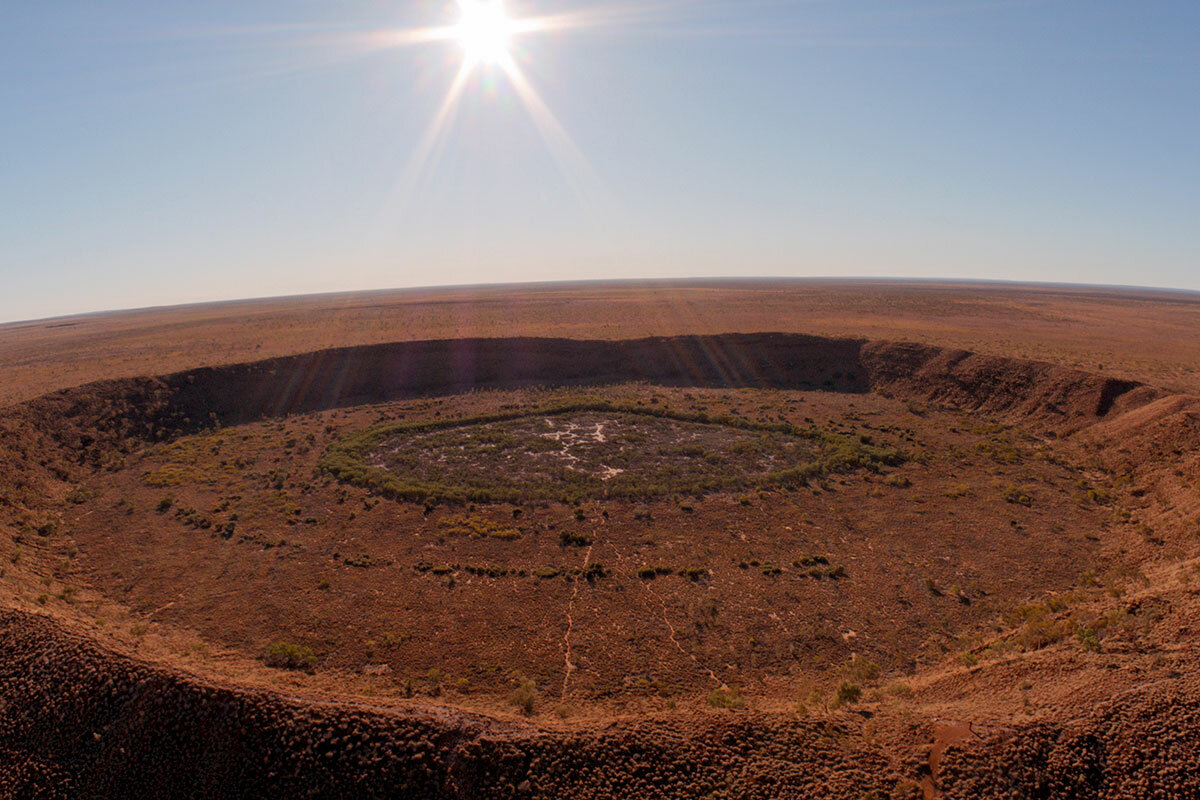
The Princeton physicist Paul Steinhardt explains, in tones of measured ecstasy, how he discovered after long investigation a five-fold symmetry in meteorological quasicrystals, a structure previously thought to be mathematically impossible. In the Center for Meteorite Studies at Arizona State University, Oppenheimer is jitteringly allowed to handle some weighty rock samples.
Throughout this cavalcade, Herzog displays his trademark dour puckishness. When an Indian scientist suggests that every element in our bodies was synthesized in the stars, his mock-indignant response quickly follows: “I am not stardust. I’m Bavarian!” But he also thrills to the magnified stained glass window-like images of micrometeorites, which he calls “the most beautiful sculptures on God’s planet.”
Perhaps the most excitable and wide-rangingly philosophical of those interviewed in “Fireball” is the planetary scientist Brother Guy Consolmagno, who resides in the Palace of the Castel Gandolfo, the summer home of the pope. Speaking of the miraculousness of the heavens, he says that “to have the ability to understand these things is itself a miracle.” He goes on: “Looking at the stars gives you that sense of out-of-yourself that you need in order to be ready to encounter a god.”
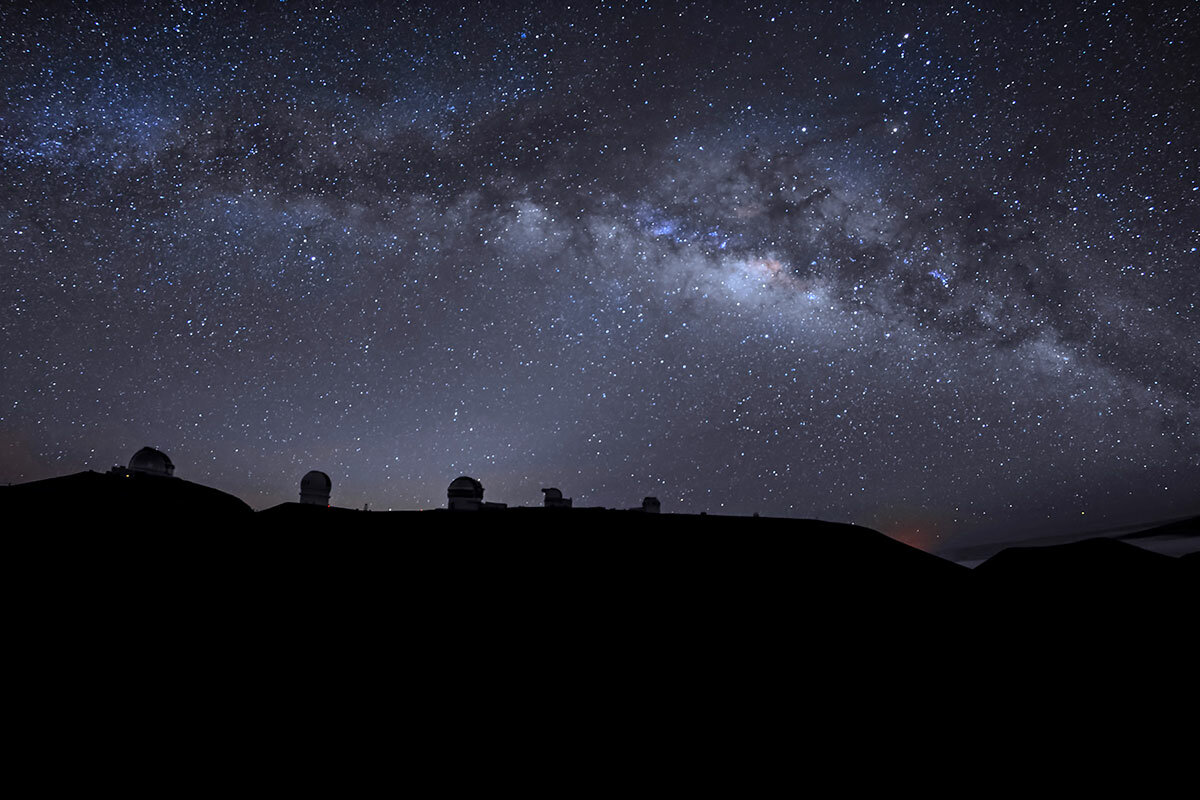
There is much more in this film, including a scary, vaguely reassuring discussion with a scientist at NASA’s Planetary Defense Coordination Office whose job it is to defend the planet against incoming asteroid attacks. (Talk about first responders!) There’s also a meeting with Norway’s leading jazz musician, Jon Larsen, whose passion for micrometeorites has led to important new discoveries. Fingering some cosmic dust, which he equates with “looking eternity in the eye,” he exclaims, “No human being has ever touched anything older!”
The documentary ends with a sacred tribal dance performed for the filmmakers and inhabitants of tiny Mer Island, located in an archipelago between Australia and New Guinea. The last image that we see are lit torches shooting embers, representing the souls of departed islanders, into the night sky. It’s a transcendental finale to a transporting film.
Peter Rainer is the Monitor’s film critic.
Other headline stories we’re watching
(Get live updates throughout the day.)The Monitor's View
Who can bridge the US divide?
- Quick Read
- Deep Read ( 3 Min. )
-
By the Monitor's Editorial Board
Call them peace committees. Or simply groups of respected elders who put principle before party or person. In many countries, they have played a pivotal role before or after a tense election to remind citizens of higher purpose than partisan gain or personal loyalty. Now, with the United States in postelection stress over President Donald Trump’s unsubstantiated claim of victory, the U.S. may be ripe for quiet intervention by a few truth-telling seniors in the Republican camp.
The U.S. has a strong precedent for saving its democracy through gentle persuasion of a president by a trusted few in his party. On Aug. 7, 1974, three top Republican lawmakers told President Richard Nixon in person that he lacked support in Congress to stay in office after it became clear he had lied about the Watergate cover-up. The next day, Nixon resigned.
For Mr. Trump, his assertions in lawsuits alleging voter fraud have so far been proved false or baseless. As his legitimacy disappears and the integrity of the vote count further emerges in Joe Biden’s favor, it opens a door for top GOP politicians to ease him toward a handover of the Oval Office.
Who can bridge the US divide?
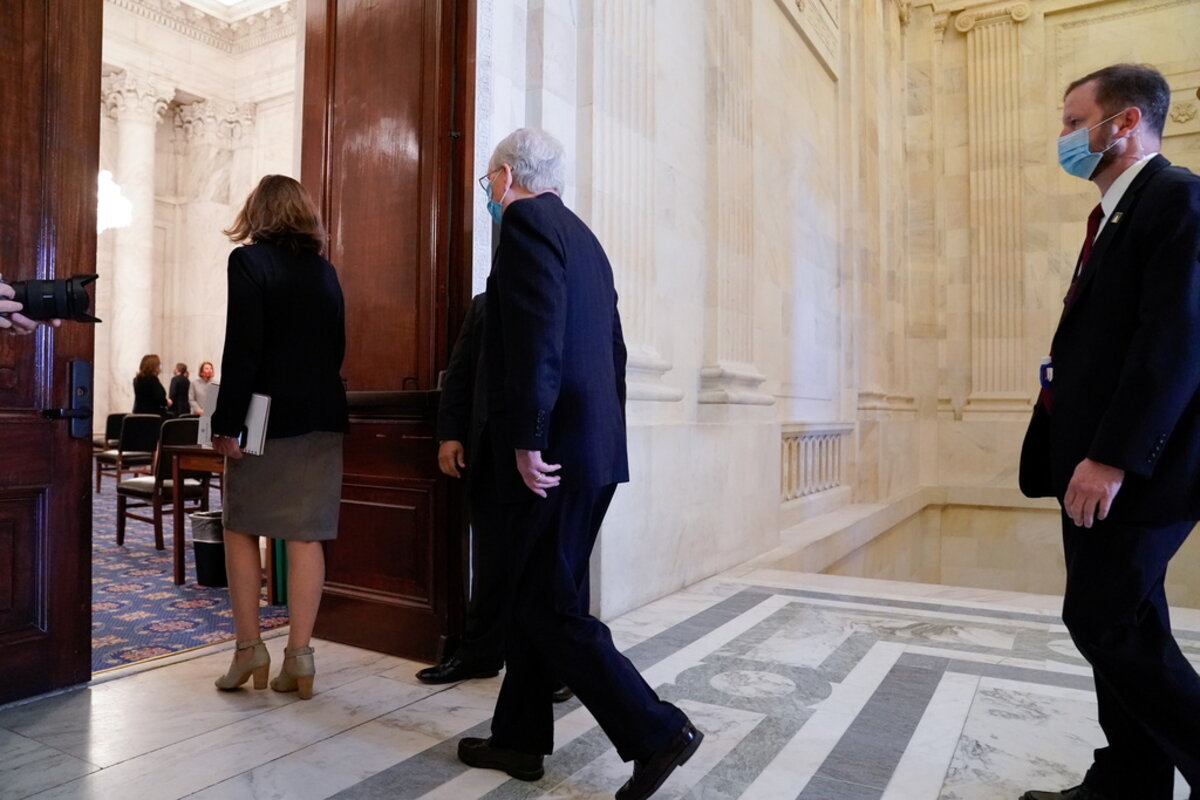
Call them peace committees. Or simply groups of respected elders who put principle before party or person. In many countries, they have played a pivotal role before or after a tense election to remind citizens of higher purpose than partisan gain or personal loyalty. Now, with the United States in postelection stress over President Donald Trump’s unsubstantiated claim of victory, the U.S. may be ripe for quiet intervention by a few truth-telling seniors in the Republican camp.
The U.S. has a strong precedent for saving its democracy through gentle persuasion of a president by a trusted few in his party. On Aug. 7, 1974, three top Republican lawmakers told President Nixon in person that he lacked support in Congress to stay in office after it became clear he had lied about the Watergate cover-up. The next day, Nixon resigned.
“For me, this is a sad day. I admire Richard Nixon, for the many great things he has done for the people of America and the people of the world,” said one of the three lawmakers, House Republican leader John Jacob Rhodes. But, he added, the entire system of government relies on principle and, in Nixon’s case, the principle of equal justice under the law must prevail.
For Mr. Trump, his assertions in at least a half-dozen lawsuits alleging voter fraud have so far been proved false or baseless. His use of the courts may be legitimate, but the lack of evidence erodes his legitimacy in not conceding the election or in trying to cling to power through his command of the executive branch. As that legitimacy disappears and the integrity of the vote count further emerges in Joe Biden’s favor, it opens a door for GOP politicians – those who are both legitimate in the eyes of the public and closest to the president – to quietly ease him toward a handover of the Oval Office come Jan. 20.
An example of this unusual type of democracy protector at work happened in Nigeria’s 2015 presidential election. Fearing violence like that in a 2011 election and a postelection standoff, 14 presidential candidates and their parties agreed to the setup of a national peace committee. The panel consisted of esteemed clergy, statesmen, businesspeople, and a former head of state. The point was to remind citizens – and the losing candidates – that they have a civic identity beyond party, ethnicity, religion, or other volatile differences and that identity includes respect for an election outcome.
The committee was able to persuade President Goodluck Jonathan to concede despite postelection tensions. For the first time in Africa’s largest economy, a president agreed to a peaceful transfer of power to a duly elected rival. “Nobody’s ambition is worth the blood of any Nigerian,” Mr. Jonathan said. For an election in 2019, a new national peace committee again helped in reducing violence and avoiding a postelection standoff.
In several countries, from Kyrgyzstan to Bolivia to Ghana, local or national groups have been set up to mediate between rivals during elections or referendums. They often included credible religious and traditional leaders who advocated at high levels for a peaceful political outcome. With wisdom they provided a moment of truth and a voice of unity.
In the U.S., it is Mr. Trump’s ardent supporters as much as Mr. Trump who need and could then accept an American-style peace committee speaking to the president. The news media, Democratic leaders, and low-level Republicans have failed at that in this era of high distrust. A widely respected group of senior Republicans – who are seen representing the ideals at stake – might both persuade Mr. Trump and heal the nation’s widening breach.

A Christian Science Perspective
Each weekday, the Monitor includes one clearly labeled religious article offering spiritual insight on contemporary issues, including the news. The publication – in its various forms – is produced for anyone who cares about the progress of the human endeavor around the world and seeks news reported with compassion, intelligence, and an essentially constructive lens. For many, that caring has religious roots. For many, it does not. The Monitor has always embraced both audiences. The Monitor is owned by a church – The First Church of Christ, Scientist, in Boston – whose founder was concerned with both the state of the world and the quality of available news.
Feel a spirit of love and peace, not fear
- Quick Read
- Read or Listen ( 3 Min. )
-
By Kim Crooks Korinek
No matter what type of situation we find ourselves in, we can turn to God for the wisdom and love that dissolve hopelessness and fear.
Feel a spirit of love and peace, not fear
A friend of mine was often critical of her adult son’s well-intended actions. But her thought changed when her son had to quarantine in another country for an unknown amount of time. Through quiet moments of prayer, she realized she needed to drop her focus on her own opinions and disappointments. Instead, she cherished how much they loved each other.
She felt what many others have felt, too: a spirit of love that wakes us up to see what is fundamental and substantial in our lives.
Christian Science, based on the Bible, explains that God, divine Spirit, is infinite Love itself. Divine Spirit is always active, and this spiritual reality gives us the ability to stand up to anxiety about troubling news reports or whatever else may be going on in our lives.
There’s a verse in the Bible that makes me feel as though I’m wrapped up in a warm blanket of comfort and assurance. It’s from Second Timothy: “God hath not given us the spirit of fear; but of power, and of love, and of a sound mind” (1:7). In one short citation, we learn that God has nothing to do with fear, chaos, and uncertainty. Rather, God has given to us the energy, stability, and intelligence to address crises of any type, large or small.
Amid growing concerns about the coronavirus, questions about the state of democracy, and apprehension about climate change, to only mention a few, I’ve found this reminder empowering: God is the infinite source of intelligence and love that can never wane.
Many thought leaders note a social and global recalibration going on now that is shaping our future. Yet there’s also a deeper, quieter, mental renovation we can all take part in. At its core is a powerful spiritual stillness.
The Bible talks about the “still small voice” of God that comforts and leads us (I Kings 19:12). This stillness is referenced in “Retrospection and Introspection” by Mary Baker Eddy, the discoverer of Christian Science: “The best spiritual type of Christly method for uplifting human thought and imparting divine Truth, is stationary power, stillness, and strength; and when this spiritual ideal is made our own, it becomes the model for human action” (p. 93).
Even when the noise of human drama seems overwhelming, we can take quiet moments in prayer to get to a deeper understanding of God as omnipresent and all-powerful Love, and to claim God’s gifts of power, love, and mental soundness, including freedom from fear. And in these precious times of yielding to divine Love, what is most essential – the goodness and peace that are naturally ours as God’s children – comes to the surface.
We can find calm in the face of crisis. God, Love, hasn’t given us the spirit of fear – fear is not of God. Infinite Love’s ideas are constantly flowing to us to remove hopelessness and empower us with the wisdom and love to find our way forward.
Generosity, wisdom, discernment, and love have become the counter-narrative to the concerns of today. Insistent and consistent, such qualities will keep rising up and replacing fear and uncertainty in proportion as we continue to rely on the spirit of “power, and of love, and of a sound mind” that God has given us all.

A message of love
Quidditch, anyone?

A look ahead
Thanks for joining us today. Come back tomorrow, when we’ll have the first video version of our popular People Making a Difference series – a profile of the founder of Princess Janae Place in the Bronx.


